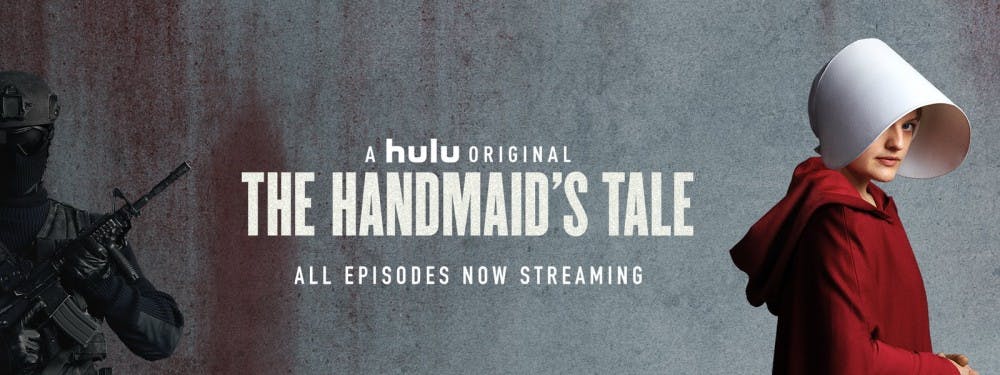Set in not too distant future America, Hulu’s new series, The Handmaid’s Tale, has been causing a stir since its first episodes were released on April 26th.
The series, based on Margaret Atwood’s 1985 novel, follows protagonist Offred in a future American society under military dictatorship. A Christian fundamentalist group has overthrown the American government after an era of declining births. The group intended to create order and promote fertility by stripping women of their rights and forcing fertile women into the position of “handmaid.” Handmaids are required to join households of the ruling class and through a series of “ceremonies” are systematically raped by these men and forced to carry their children.
What makes this series so powerful is its basis on historical precedents. There is no doubt that the society draws legitimacy from teachings in the Bible. In fact, it’s in the Old Testament that the concept of a handmaid originates, when Jacob uses a handmaiden to have children “through” Rachel. The reading of this text before the “ceremony” seems like a sort of justification for the oppression and rape of women. It’s an oppression that also feels eerily similar to America’s own roots: puritanism. The theocracy that America was founded on was certainly oppressive for women and placed men with total power. Atwood has even famously claimed that there is nothing in the book that didn’t happen somewhere, blurring the lines between the work as our future or our past.
It’s a sometimes slow moving show that heavily relies on the power of symbols and traditions, leaving viewers feeling strangely connected to this dystopian society. Every role in the society is assigned certain clothes and colors, the most memorable being the red cloak and white bonnet handmaids are forced to wear. This distinctive outfit has become a widely recognized symbol for injustice, with modern activists borrowing it to reinforce their message. Just this week, a group of Planned Parenthood volunteers donned the outfit as they protested the new healthcare bill, which plans to eliminate Planned Parenthood funding. The image of handmaids standing outside the capital is powerful, and honestly, a little too real.
The show constantly takes events in our own world and extends them just far enough to be believable. Before the total government overthrow, Offred and her friends arrive at work to find out all women have been fired and will not be paid. It’s extremely difficult to watch a scene set in our own America as men refuse to pay or acknowledge the talents of women—especially considering the wage gap, women who have been fired because of their gender, and gender discrimination in our own society. As all the women file out of the building with their possessions, totally powerless, you can’t help but wonder if this isn’t a direction we could be headed for.
This show is so powerful (and so scary) because it's entirely relevant to modern day. It’s not that this story hasn’t been told before: in text it has existed for 34 years and it has been adapted for the stage three times, for the opera, for the ballet, for the radio, and as a 1990 film. But it’s the fact that this show has been released in the post–Trump world where Planned Parenthood is being defunded, women are stocking up on birth control pills, and it’s perfectly legitimate to talk about the possibility of abortion being restricted or criminalized. Additionally, the murder of gay citizens as “gender traitors” acting against the Bible sounds a little too close to Mike Pence’s statements saying the gay community is a sign of “societal collapse” and discrimination of these people is “God’s idea.” And that’s straight from our own VP, not the show.
Despite all of this, what I find the most compelling about the show is all the attempts made to censor it. Across the country, there have been accounts of high schools banning the novel due to anti–Christian views. In the 1990s the American Library Association reported it was the 37th most–challenged book. There’s no doubt that the show takes on many of our traditional norms, bending gender roles and religion to the extreme. Yet, how is banning it any different from the women in the show who are not allowed to read?
Ultimately, what gives the show its continuing power is that ambiguous note that the first season ends on. We don’t know Offred’s fate or what will happen to her or the other women, all we have are those final words: “And so I step up, in to the darkness within; or else the light.” The show doesn’t end with everyone overthrowing the oppressive government and women getting their rights back. It also doesn’t end with Offred accepting her position in life. It’s this ambiguous ending which has inspired protesters to don the red cloak and white bonnet outside the Capitol Building, because it’s an ending that we get to write ourselves.







